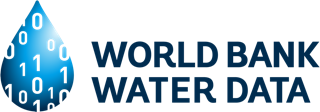Over the past decade, Albania has been seeking to develop the framework for a market economy and more open society. It has faced severe internal and external challenges in the interim – extremely low income levels and a lack of basic infrastructure, the rapid collapse of output and inflation rise after the shift in regime in 1991, the turmoil during the 1997 pyramid crisis, and the social and economic shocks accompanying the 1999 Kosovo crisis. In the face of these challenges, Albania has made notable progress in creating conditions conducive to growth and poverty reduction. A poverty profile based on 1996 data (the most recent available) showed that some 30 percent of the rural and some 15 percent of the urban population are poor, with many others vulnerable to poverty due to their incomes being close to the poverty threshold. Income related poverty is compounded by the severe lack of access to basic infrastructure, education and health services, clean water, etc., and the ability of the Government to address these issues is complicated by high levels of internal and external migration that are not well understood. To date, the paucity of household-level information has been a constraining factor in the design, implementation and evaluation of economic and social programs in Albania. Multi-purpose household surveys are one of the main sources of information to determine living conditions and measure the poverty situation of a country, and provide an indispensable tool to assist policymakers in monitoring and targeting social programs. Two recent surveys carried out by the Albanian Institute of Statistics (INSTAT) – the 1998 Living Conditions Survey (LCS) and the 2000 Household Budget Survey (HBS) – drew attention, once again, to the need for accurately measuring household welfare according to wellaccepted standards, and for monitoring these trends on a regular basis. In spite of their narrow scope and limitations, these two surveys have provided the country with an invaluable training ground towards the development of a permanent household survey system to support the government strategic planning in its fight against poverty. In the process leading to its first Poverty Reduction Strategy Paper (PRSP; also known in Albania as Growth and Poverty Reduction Strategy, GPRS), the Government of Albania reinforced its commitment to strengthening its own capacity to collect and analyze on a regular basis the information it needs to inform policy-making. In its first phase (2001-2006), this monitoring system will include the following data collection instruments: (i) Population and Housing Census; (ii) Living Standards Measurement Surveys every 3 years, and (iii) annual panel surveys. The Population and Housing Census (PHC) conducted in April 2001, provided the country with a much needed updated sampling frame which is one of the building blocks for the household survey structure. The focus during this first phase of the monitoring system is on a periodic LSMS (in 2002 and 2005), followed by panel surveys on a sub-sample of LSMS households (in 2003, 2004 and 2006), drawing heavily on the 2001 census information. The possibility to include a panel component in the second LSMS will be considered at a later stage, based on the experience accumulated with the first panels. The 2002 LSMS was in the field between April and early July, with some field activities (the community and price questionnaires) extending into August and September. The survey work was undertaken by the Living Standards unit of INSTAT, with the technical assistance of the World Bank. The present document provides detailed information on this survey. Section II summarizes the content of the survey instruments used. Section III focuses on the details of the sample design. Sections IV describes the pilot test and fieldwork procedures of the survey, as well as the training received by survey staff. Section V reviews data entry and data cleaning issues. Finally, section VI contains a series of annotations that all those interested in using the data should read.


